 Click here for the "Municipal Wastewater Treatment at Ancient Times"...
Click here for the "Municipal Wastewater Treatment at Ancient Times"...
 Click here for the "Municipal Wastewater Treatment at Ancient Times"...
Click here for the "Municipal Wastewater Treatment at Ancient Times"...
| Complete Flow - Chart of a Typical Wastewater Tretment Plant - 1 | |||
 |
Physical treatment | Biological treatment | Sludge treatment |
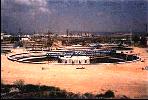
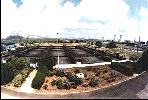
| Complete Flow - Chart of a Typical Wastewater Tretment Plant - 2 | ||||
 |
Inlet works - Pumping - Screening - Grit removal | Primary sedimentation - Activated sludge process | Secondary sedimentation - Sand filtering - Chlorination | Sludge thickening - Sludge processing - Dewatering |
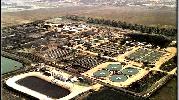
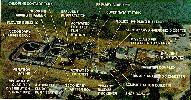
 "Ion Exchange System"...
"Ion Exchange System"...
 "Phosphorus Removal"...
"Phosphorus Removal"...
| Complete Flow - Chart of a Typical Wastewater Tretment Plant - 3 | ||||
 |
Inlet works - Pumping | Screening - Grit Removal | Primary sedimentation | Trickling filter process |
| Secondary sedimentation | Sludge pumps | Sludge holding tanks | Blowers | |
| Dissolved air flotation | DAF control system | Digester pumps | Anaerobic digesters | |
| Methane generators | Sludge conditioning | Sludge dewatering | Dewatered sludge disposal | |
 Click here for info about the "Municipal Wastewater Treatment Plant" of which flow - charts just were given above"...
Click here for info about the "Municipal Wastewater Treatment Plant" of which flow - charts just were given above"...
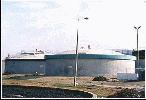
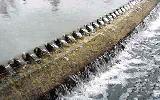
| Complete Flow - Chart of a Typical Wastewater Tretment Plant - 4 | |||
 |
Detailed plant lay - out Detailed plant flow - chart | ||
| Preliminary treatment | Biological reactors | Sedimentation tanks | |
| RAS & WAS pumping | Effluent storage | Chlorination system | |
| Reuse pump station | Sludge processing | Tertiary filtration | |
| Capacity | Number of Plants |
| < 2,000 pe | 446 |
| 2,000 - 4,999 pe | 52 |
| 5,000 - 9,999 pe | 22 |
| > 10,000 pe | 2 |
| pe : Population equivalent. Each person produces a quantity of waste each day amounting to 55 gms BOD. It is usual to convert industrial waste into population equivalents by dividing the measured BOD by 55 gms. | |

